
Memories Aicha Luxury Camp is luxury desert camp in Wadi Rum Is an ideal base for your Arabian Desert adventure and stay , with spectacular mountains in the distance. The camp is sprawled across 4 kilo meters square and with 40 luxurious tent await those who seek the ultimate desert adventure. You can explore Wadi Rum in several ways: Jeep tours and Camel rides are a popular activity Combining modern style living and comfort while still living the authentic desert experience, Panoramic Luxury Suite offer the guests that will allow you to gaze at the magnificent moon and stars from your own comfortable bed. Aicha Restaurant With the total area of 700 square meters is ideal for receptions, group and other occasions. An unforgettable ambiance and experience for anyone looking for something special.
Create: Oct 22, 2022 Edit: Oct 22, 2022 TV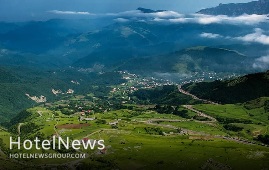
Countries are defined geographically and politically by their borders. Borders are fundamentally linked to tourism, as travel almost always entails crossing a political or another boundary, and borderlands are often the first or last areas of a country visited by travelers. Iran has a total of 5,894 kilometers of land borders with its neighbors Afghanistan, Armenia, Azerbaijan, Iraq, Pakistan, Turkey, and Turkmenistan. It also borders the Caspian Sea, Persian Gulf, and the Gulf of Oman. Several border cities dot Iran, owing to the vast size of the country’s land borders. The border cities of Iran, however, have limited tourist numbers due to their long distances from the country’s center, as well as the fact that they have not been properly promoted for foreign visitors. Here are some of the most beautiful border cities that have always gone unnoticed. Astara Astara, an Iranian border city and port, offers a wide range of tourist attractions. It is a major tourist and economic center on the west coast of the Caspian Sea, in the Gilan province. It is the last point of the border between Iran and Azerbaijan. Hakim Nezami School and Shindan Castle are two of the city’s historical sites. Astara Lagoon, Astarachay river, Qarasu river, Chelvand river, Darband river, Lavandvil river, and Espinas mountain are some of the city’s natural attractions. Among Iran’s border regions, Astara is the only area that has not experienced any tensions in the last 80 years, making it one of the safest. There is a great deal of tourism in this region because of the natural beauty and the weather. Jolfa Located in northwestern East Azarbaijan province, Jolfa borders the countries of Armenia and the Republic of Azerbaijan to the north. Jolfa has a semi-desert climate with warm summers and partly cold, moderate winters. The special importance of Jolfa is due to its historical monuments, strategic location, and appropriate geographical features, as well as its proximity to the commercial and industrial free zone of Aras (one of Iran’s most important commercial centers). Seyyed Abolqasem Nabati tomb, Duzal tower, Saint Stepanos Monastery, Nane Maryam church, ruined mill, Ushtibin village, St. Mary church, Baba Yaqub shrine, Ali Beyg fort, Jolfa historical bath and etc., are the most significant monuments and tourist attractions in this area. The region’s economy is fueled by the abundance of water resources, grasslands, and forest reserves, as well as its high potential for growth and industrialization. Minerals, agriculture, livestock, services, and scientific and training development also play an important role. There are a lot of cotton fields in this city, and weaving is the major activity of the locals. Jolfa people are Azeri and they speak in Turki Azerbaijani in their own local dialect. Maku Maku is located northwestern province of West Azarbaijan and enjoys a unique geographical and natural location. In a valley passes through which the Zangmar River divides Maku into two parts, the city is located 1294 meters above sea level. The city is surrounded by the Qarasu River and Turkey from the north, the Aras River (the Nakhchivan Autonomous Republic and Armenia) from the east, Khoy from the south, and Turkey from the west. Due to the surrounding stony mountains, this city has a moderate climate in winter and a hotter climate in summer. Mountainous landscapes, flourishing pastures, hot water springs, waterfalls, protected areas, and hunting grounds are some of the tourist attractions of this area. Maku is located on the main Tabriz-Bazargan road and has an excellent strategic location. Among the city’s most significant features is its role as the country’s only land border business and a link to Europe. As part of Maku’s economy, there is an industrial complex on the Maku-Bazargan road. Maku people rely on cross-border trade, agriculture, and animal husbandry for their livelihood. Zahedan The city of Zahedan is located in eastern Iran close to the Pakistani border. There are high lands around Zahedan, so it looks like a pit. The city is home to the mountains of Oshtoran Koh, Anjir Dan, Jico, Pir Khan, and Mulk-e Siah. Climates in this area are characterized by intense heat, aridity, and warmth. Zahedan consists of 4 parts: "Markazi", "Mir Jave", "Nosrat Abad", and "Korin", three cities, and eight rural districts. It is an academic, cultural, historical, and religious city that has a service structure. Zahedan enjoys a privileged geographic and border location which makes it an ideal place for trade with India thanks to its convenient location on the Afghanistan-Pakistan route. Pakistan’s railway enters Iran from the Mirjaveh border and Iran’s railway ends in this city. By being located among the Khorasan, Kerman, and Chabahar land routes, Zahedan is one of the Iran transit routes. Zahedan’s economy depends on agriculture in addition to trade. There are subterranean, spring, and river wells that supply the water this city needs. This area is full of color in its literature, clothing, and music. Zahedan’s cultural diversity results from migration. A good example of Baluch handicrafts is the klim bafi, needlework, seke dozi, and pottery. Zahedan architecture is influenced by Iran's ancient architecture due to its tropical weather. Baneh One of the border cities between Iran and Iraq, Baneh is located in the western province of Kordestan. The city is located 20 kilometers from the Iranian-Iraqi border, 60 kilometers southwest of Saqez and 70 kilometers southeast of Sardasht. The city is known for its large and natural oak forests. In 1984, Iraqi planes bombed Baneh and some nearby settlements during the Iran-Iraq war (1980-1988). Dul Arzan village, Shevi cave, Baneh Dam, Sorin complex are among the city’s tourist attractions, however, most of its reputation comes from its border malls and its status as a trade center. Local people speak Kurdish with Slemani accent.
Create: Jul 17, 2021 Edit: Jul 17, 2021 Regional News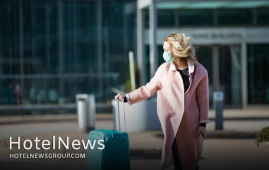
International tourist arrivals were down 83% in the first quarter of 2021 as widespread travel restrictions remained in place. However, the UNWTO Confidence Index shows signs of a slow uptick in confidence. Between January and March 2021 destinations around the world welcomed 180 million fewer international arrivals compared to the first quarter of last year. Asia and the Pacific continued to suffer the lowest levels of activity with a 94% drop in international arrivals over the three-month period. Europe recorded the second largest decline with -83%, followed by Africa (-81%), the Middle East (-78%) and the Americas (-71%). This all follows on from the 73% fall in worldwide international tourist arrivals recorded in 2020, making it the worst year on record for the sector. Lack of coordination harms RestartTourism UNWTO Secretary-General Zurab Pololikashvili comments: “There is significant pent-up demand and we see confidence slowly returning. Vaccinations will be key for recovery, but we must improve coordination and communication while making testing easier and more affordable if we want to see a rebound for the summer season in the northern hemisphere.” Vaccinations will be key for recovery, but we must improve coordination and communication while making testing easier and more affordable if we want to see a rebound for the summer season in the northern hemisphere. The latest survey of the UNWTO Panel of Tourism Experts shows prospects for the May-August period improving slightly. Alongside this, the pace of the vaccination rollout in some key source markets as well as policies to restart tourism safely, most notably the EU Digital Green Certificate, have boosted hopes for a rebound in some of these markets. Overall, 60% expect a rebound in international tourism only in 2022, up from 50% in the January 2021 survey. The remaining 40% see a potential rebound in 2021, though this is down slightly from the percentage in January. Nearly half of the experts do not see a return to 2019 international tourism levels before 2024 or later, while the percentage of respondents indicating a return to pre-pandemic levels in 2023 has somewhat decreased (37%), when compared to the January survey.
Create: Jun 16, 2021 Edit: Jun 16, 2021 International News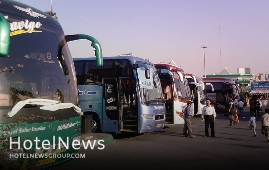
No ban on Noruz travels has been imposed for people who would use public transport, Transport and Urban Development Minister Mohammad Eslami announced on Sunday. No ban has been imposed on inactivity travels via public transport. And the criterion for the activity of the air, rail, and road fleets of the country is the observance of health protocols concerning the coronavirus pandemic, the minister explained. Earlier this month, President Hassan Rouhani declared new travel bans for cities situated in the “red” and “orange” zones to combat the new COVID-19 variant. Rouhani called on people to avoid traveling during the Iranian New Year holidays to help contain the spread of coronavirus. He said it would be forbidden to make trips to cities marked as “red” and “orange” in terms of the prevalence of COVID-19. “We request people to avoid traveling during Noruz holidays for the sake of their own health… It will be forbidden to travel to red and orange towns and cities,” he said. “No one should make any plans to travel to these cities,” he stressed. Late in February, the tourism minister, Ali-Asghar Mounesan, said despite all the obstacles and issues and the outbreak of the coronavirus, the country’s tourism sector is still alive and dynamic. Noruz ceremonies and trips, if practiced under health protocols, could be beneficial for the revival of the tourism industry and handicrafts, which have been severely affected by the coronavirus pandemic in many provinces, the minister explained. Iranians traditionally make hundreds of thousands of domestic trips during the New Year holidays, when most businesses and workplaces are closed, as are schools.
Create: Mar 16, 2021 Edit: Mar 16, 2021 Regional News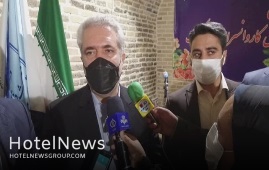
The Iranian government has paid 6.5 trillion rials ($154.7 million at the official exchange rate of 42,000 rials per dollar) in loans to the tourism businesses affected by the coronavirus pandemic across the country in the current Iranian year 1399 (started on March 20, 2020), the tourism minister has said. Although the coronavirus outbreak has caused significant damage to the tourism industry, one of the ministry’s strategic plans is to diversify tourism products, which is expected to expand economic prosperity, Ali-Asghar Mounesan announced on Monday. Several historical structures and aging buildings have been revived and repurposed into different accommodation centers to attract more domestic and foreign travelers, he added. In recent years, nature tourism has also gained popularity due to the country’s natural beauty and attractions, he explained. In this regard, several eco-lodge units have been established even in the farthest regions of the country as well, the minister noted. Elsewhere in his remarks, he expressed hope that limited Noruz trips would be possible, if practiced under health protocols, during the Iranian New Year vacations, which begins on March 21. Government’s care and support packages Last October, the deputy tourism chief, Vali Teymouri, announced that a new support package was approved to pay loans to businesses affected by the coronavirus pandemic. Depending on the type and activity of the businesses, they could benefit from at least 160 million rials ($3,800 at the official rate of 42,000 rials) to nine billion rials ($214,000) of bank loans with a 12-percent interest rate, he said. The loans would be allocated to tourist guides, travel agencies, tourism transport companies, tourism educational institutions, eco-lodges and traditional accommodations, hotels, apartment hotels, motels, and guesthouses as well as traditional accommodation centers, tourism complexes, and recreational centers, the official explained. Teymouri in September pointed to the 1.3 million tourism workers in the country, who are facing several issues due to the coronavirus crisis and said “This number, in addition to their households, includes a significant population that makes a living through tourism, who are needed to be considered in ministry’s decisions.” Back in August, Teymouri announced that the tourism ministry had approved a total budget of 4,920 billion rials (over $117 million) to support corona-affected tourism businesses, covering as much as 36,000 people working in the tourism sector. Tourism industry in critical situation Mounesan in October warned that Iran’s cultural heritage and tourism would be in a critical situation if the crises caused by the outbreak of the coronavirus continue. Last August, the tourism minister said that the tourism sector of the Islamic Republic had suffered a loss of 12 trillion rials (some $2.85 billion) since the outbreak of the coronavirus pandemic. He also noted that the coronavirus pandemic should not bring traveling to a complete standstill. “Corona is a fact, but can the virus stop tourism? Certainly not. For us, the coronavirus is a new experience in dealing with crises that teaches tourism experts around the world how to deal with such a disaster, and thankfully governments are turning this into an opportunity for better planning.” Optimistic forecasts, however, expect Iran to achieve a tourism boom after coronavirus contained, believing its impact would be temporary and short-lived for a country that ranked the third fastest-growing tourism destination in 2019. The latest available data show eight million tourists visited the Islamic Republic during the first ten months of the past Iranian calendar year (started March 21, 2019).
Create: Mar 3, 2021 Edit: Mar 3, 2021 Regional News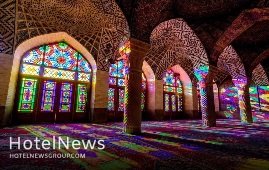
Iran’s tourism industry has suffered a loss of some 220 trillion rials (about $5.2 billion at the official exchange rate of 42,000 rials per dollar) since the outbreak of the coronavirus pandemic, Cultural Heritage, Tourism, and Handicrafts Minister said on Tuesday. “Iran’s tourism has suffered some 220 trillion rials due to corona pandemic so far…. and we hope that with the production of domestic vaccines, tourism will flourish in 1400 [the new Iranian calendar year which begins on March 21],” Ali-Asghar Mounesan said. He made the remarks during the opening ceremony of Tehran’s international tourism and handicrafts fair, which is currently underway at Tehran Permanent International Fairgrounds. “We hope that the widespread vaccine would bring prosperity to all branches of tourism such as agritourism, ecotourism, and nature tourism,” the minister said. “Over 1.5 million jobs have been lost in the tourism sector of Iran due to the COVID-19 disease…. Many of the tourism-insiders are now unemployed or they are staying at home,” Mounesan announced last December. The government had previously allocated a total of 500 trillion rials (about $12 billion) to the corona-affected sectors, of which 200 trillion rials ($4.7 billion) will be given to the health ministry and the rest will be spent on other sectors, he explained. Last month, the minister announced that the national budget bill for the next calendar year (starting on March 20) has proposed 70 trillion rials (about $1.7 billion) to support tourism businesses affected by the coronavirus pandemic. If the budget receives parliament’s approval, it will be injected into different sectors of the tourism industry, which has taken a major hit from the coronavirus outbreak over the previous months, he noted. Despite the toughest economic pressures and sanctions, the government has provided good support to all sectors of tourism, the minister said. However, there is hope that the beginning of mass vaccination against the coronavirus will provide better conditions for tourism and businesses related to this sector, he explained. Government’s care and support packages In late October, the deputy tourism minister, Vali Teymouri, announced that a new support package to pay loans to businesses affected by the coronavirus pandemic has been approved. Depending on the type and activity of the businesses, they could benefit from at least 160 million rials ($3,800) to nine billion rials ($214,000) of bank loans with a 12-percent interest rate, he said. The loans will be allocated to tourist guides, travel agencies, tourism transport companies, tourism educational institutions, eco-lodges and traditional accommodations, hotels, apartment hotels, motels, and guesthouses as well as traditional accommodation centers, tourism complexes, and recreational centers, the official explained. Teymouri pointed to the 1.3 million tourism workers in the country, who are facing several issues due to the coronavirus crisis, and said “This number, in addition to their households, includes a significant population that makes a living through tourism, who are needed to be considered in ministry’s decisions.” Teymouri has said that the tourism ministry has approved a total budget of 4,920 billion rials (over $117 million) to support corona-affected tourism businesses, covering as much as 36,000 people working in the tourism sector.
Create: Feb 24, 2021 Edit: Feb 24, 2021 Regional News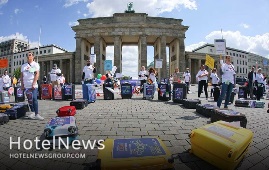
Tourism, which was once a beacon of hope for countries to diversify their economies, has been taking some serious battering since the spread of COVID-19. Its association with aviation, another main casualty of the pandemic, further deepened the scars for a sector that will need years to regain its pre-pandemic number of international arrivals - and with it - spending. While how long is anyone’s guess, preserving a country’s standing in tourism would take more than the pandemic going away and travellers getting back on planes. Akin to any other sector expected to drive diversification efforts, and overall economic growth in the country, tourism must be supported and nurtured to ensure its long-haul survival. COVID-19 has highlighted the importance of tourism, except that such importance is not linked to the number of travellers arriving at or going through a country’s points of entry. Rather, the economic activity that they generate in sectors directly associated with tourism, like hospitality.
Create: Feb 15, 2021 Edit: Feb 15, 2021 International News
Hyatt Place Fort Worth/TCU announced today its official opening. The six story, 150-room hotel is the first and only hotel to be located right next to the campus of Texas Christian University (TCU). Featuring the Hyatt Place brand’s signature offerings, the new hotel provides 3,500 square feet of meeting and event space and Lot 12, an expansive rooftop bar overlooking the TCU campus, along with two Top Golf Swing Suites. Hyatt Place Fort Worth/TCU has been designed to serve as a destination for guests to refresh, recharge, and reconnect while enjoying the energy and atmosphere of the TCU campus. “Fort Worth is a world-class city and key business and leisure destination. Hyatt Place Fort Worth/TCU serves as a wonderful new option for business and leisure travelers visiting the heart of the city’s University and Cultural district,” said General Manager Regina Rhodes. Hyatt Place Fort Worth/TCU is conveniently located just minutes from the Fort Worth Medical District and downtown Fort Worth. In addition to being close to event venues such as the new Dickies Arena and Will Rogers Memorial Center, the hotel offers guests and visitors convenient access to the historic Stockyards as well as restaurants in the exciting 7th Street and Nearby Southside areas. Hyatt Place Fort Worth/TCU will feature: 150 spacious guestrooms with a Cozy Corner sofa-sleeper providing separate spaces to sleep, work, and play.Breakfast Bar featuring hot breakfast items, fresh fruit, steel cut oatmeal, Greek yogurt, and more.The Market serving freshly prepared meals anytime, day or night.The Bar featuring specialty coffees and premium beers, as well as wines and cocktails.Necessities program offering forgotten items that guests can buy, borrow or enjoy for free.Free Wi-Fi throughout hotel and guestrooms.Valet and Self-Parking available.Event Spaces consisting of 3,500 square feet of flexible, high-tech meeting/event space.Fitness Center featuring cardio equipment with LCD touchscreens.Rooftop Bar, Lot 12 featuring both indoor and outdoor seating and two Top Golf Swing Suites. “As a TCU alumnus, I’m beyond thrilled to be opening the first hotel ever to be located within walking distance of my alma mater, TCU,” said John F. Davis III, President of Campus Hotel Venture, the owner of the hotel. “Every college campus needs a hotel like this where sports fans can easily walk to the college stadiums, or parents and students can stay and easily tour the campus. Our new Hyatt Place Fort Worth/ TCU is an incredible asset to the TCU community. With a large ballroom for events, an expansive rooftop sports bar, guestrooms that are among the largest in Ft. Worth, and plenty of self-parking, all located within walking distance of nearly every TCU activity, we expect our hotel to be a popular hub for students, professors, and their family and friends.” Hyatt Place Fort Worth/TCU LEADERSHIP Hyatt Place Fort Worth/TCU will be under the leadership of General Manager, Regina Rhodes and Director of Sales, Georgia Fournier. In her role, Rhodes will be directly responsible for managing the day-to-day operations of the hotel, including overseeing the hotel’s 57 associates and ensuring guests encounter the thoughtful service for which the Hyatt Place brand is known. Fournier will be responsible for providing sales service and support to travelers and meeting planners frequenting the Fort Worth area.
Create: Feb 13, 2021 Edit: Feb 13, 2021 International News
Two acclaimed African American developers – Victor MacFarlane of MacFarlane Partners and R. Donahue Peebles of The Peebles Corporation – are doubling-down on their multi-million-dollar effort to bring thousands of new jobs and economic benefits to the nation’s second-largest city as development partners of Angels Landing, their $2 billion twin-tower luxury hotel project in downtown L.A.’s Bunker Hill neighborhood. MacFarlane and Peebles are majority-owner principals of Angels Landing Partners, LLC, the development partnership responsible for conceiving, designing, building, and operating Angels Landing. The partnership was officially selected by L.A. City officials at the conclusion of the city’s competitive bid process in 2017. Their partnership’s intentions are firmly focused on completing construction of Angels Landing before elite athletes, sports officials and tourists worldwide converge in L.A. for the 2028 Olympic Summer Games. Victor B. MacFarlane, chairman and CEO, MacFarlane Partners said, “Angels Landing aligns well with many of the projects we have built in the past 30 years throughout the U.S., including two residential developments recently completed near Pershing Square.” “The foundation of our business has always been to strengthen communities where we do business,” Mr. MacFarlane said. “We believe we can help communities prosper. We know Angels Landing will have a significant positive impact on L.A.’s economy. The ripple effect of Angels Landing’s substantial economic and employment activity will reverberate throughout L.A. County by providing good-paying union jobs to construct our hotel project and extensive career opportunities when the project is completed, and its hotels are open to the public. We have spent more than $10 million to move our project forward. We’re not letting the coronavirus pandemic slow us down. We anticipate our project entitlement this year,” he added. Angels Landing is comprised of two towers, each anchored by its own five-star hotel. In addition to the hotels, the development will feature an expansive modern urban park – known as Angels Landing Plaza – designed to serve as a pedestrian-centered, transit-adjacent, open space environment in the heart of downtown L.A. R. Donahue Peebles, Chairman and CEO, The Peebles Corporation said, “Equity and inclusion are bedrock principles at the Peebles Corporation. My success is predicated on opportunities I received because of those two important tenets. I have built an impressive collection of commercial and residential projects in New York, Washington, D.C., Miami, and other U.S. cities.” “In each city, I’ve been most excited about using my influence to empower Black-owned, Latino-owned, and women-owned business leaders. My company works diligently to help minority-owned enterprises grow their businesses through procurement contracts established through our development projects,” Mr. Peebles said. According to an analysis prepared by BJH Advisors, LLC., more than 8,300 new jobs will be created during Angels Landing’s project design and construction. The New York City-based firm’s report estimates Angels Landing would additionally create more than 800 permanent jobs in downtown L.A. An estimated 500 jobs would be created by vendors in the L.A. County region providing good and services to the two luxury hotels. In addition to new job creation, the BJH Advisors analysis projects Angels Landing would give L.A.’s local economy a $1.6 billion boost and contribute $731 million to local worker’s earnings during its construction. The project would generate as estimated 12 million in recurring tax revenues and $2.4 million annually in local property tax revenues, according to the report. “With Angels Landing, the transformative impact of empowerment and economic inclusion will be felt by an array of businesses, including Latino- and Asian-owned businesses. We have committed to a goal of 30% M/WBE contracting across the board for our project. We’re raising the bar for economic inclusion for development projects in Los Angeles,” Mr. Peebles added. Angels Landing Plaza will frame the angular, multi-level Bunker Hill site as a publicly accessible, privately managed park amenity, establishing it as a vibrant, inviting, and treasured locale for L.A.’s downtown neighborhood residents, weekday commuters, nightlife seekers, tourists, and hotel guests. L.A.’s historic Angel’s Flight funicular will operate on its hillside-climbing route contiguous to the Angels Landing development. “With our commitment to Angels Landing, we are committing to the future of downtown Los Angeles. Despite the millions of dollars expended so far to keep our project on-track, and notwithstanding the strong pandemic-induced recessionary pressures on L.A.’s economy, we continue to push hard to make our plans for Angels Landing a reality. Having recently completed our Park Fifth apartment complex, a two-building development adjacent to Pershing Square, Angels Landing represents our continued faith in the economic future of downtown Los Angeles,” Mr. MacFarlane said. Mr. Peebles said, “2020 was a trying year for nearly every sector in the business world. And the first three quarters of 2021 may be equally challenging. But we’ve faced big challenges in the past and always managed to prevail. The success of our development businesses is a testament to our drive and commitment to build projects that improve the quality of life in the communities where they’re built.” Mr. MacFarlane said, “The economic impact of the coronavirus pandemic has been significant this year. Some of those negative economic impacts, such as lagging job growth, are projected to extend well into 2021. But pessimistic economic indicators and projections have not shaken our resolve to build Angels Landing. We’re making our investment to create new jobs for L.A. area residents. We’re confident Angels Landing will help the L.A. economy rebound and gain strength. Angels Landing will create thousands of jobs that will result in millions of dollars circulating throughout the L.A. region providing a needed boost to small businesses.”
Create: Feb 11, 2021 Edit: Feb 11, 2021 International News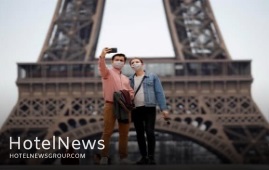
The coronavirus crisis cost the global tourism sector $1.3 trillion in lost revenue in 2020 as the number of people traveling plunged, the UN said, calling it "the worst year in tourism history". Revenue lost last year amounted to "more than 11 times the loss recorded during the 2009 global economic crisis," the Madrid-based UN World Tourism Organization (UNWTO) said in a statement, warning that between 100 million and 120 million direct tourism jobs were at risk, AFP reported. International tourist arrivals fell by one billion, or 74 percent, in 2020 with Asia, the first region to feel the impact of COVID-19, seeing the steepest decline, it added. "While much has been made in making safe international travel a possibility, we are aware that the crisis is far from over," UNWTO head Zurab Pololikashvili said in the statement. The rollout of COVID-19 vaccines is expected to "slowly normalize travel" in 2021 but many countries are reintroducing travel restrictions such as quarantines, mandatory testing and border closures "due to the evolving nature of the pandemic", the body said. The Asia and Pacific region recorded an 84 percent drop in arrivals. It was followed by Africa and the Middle East with a 75 percent drop, Europe with 70 percent fewer visitors "despite a small and short-lived revival in the summer" and the Americas where arrivals fell by 69 percent. International tourism arrivals rose by four percent in 2019 to 1.5 billion, with France the world's most visited country, followed by Spain and the US. The last time international tourist arrivals posted an annual decline was in 2009 when the global economic crisis led to a four percent drop. The UNWTO said most experts do not see a return to pre-pandemic levels of tourism activity before 2023. Open-air and nature-based tourism will see growing demand when tourism restarts, with domestic tourism also expected to be more popular, the body said. While international tourism has taken a hit from the outbreak of disease in the past, the coronavirus is unprecedented in its geographical spread. By comparison, international tourism arrivals fell by just 0.4 percent in 2003 after the outbreak of Severe Acute Respiratory Syndrome (SARS) which killed 774 people worldwide. The coronavirus has killed at least 2,176,000 people since the outbreak emerged in China in December 2019, according to a tally from official sources compiled by AFP. The tourism industry accounts for about 10 percent of the world's gross domestic product (GDP) and jobs.
Create: Feb 3, 2021 Edit: Feb 3, 2021 International News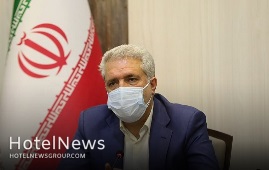
Iran’s tourism industry has suffered a loss of over 140 trillion rials (about $3.33 billion at the official exchange rate of 42,000 rials per dollar) since the outbreak of the coronavirus pandemic, Cultural Heritage, Tourism, and Handicrafts Minister has said. Although the worldwide outbreak of COVID-19 has brought the whole world to a standstill, the tourism industry has been the worst affected of all economic sectors, IRNA quoted Ali-Asghar Mounesan as saying on Sunday. However, efforts are being made by the government to help the tourism sector flourish again with continuous support and injecting supportive packages, he added. The government has allocated a total of 500 trillion rials (about $12 billion) to the corona-affected sectors, of which 200 trillion rials ($4.7 billion) will be given to the health ministry and the rest will be spent on other sectors, he explained. Earlier this week, the minister announced that the national budget bill for the next calendar year (starting on March 20) has proposed 70 trillion rials (about $1.7 billion) to support tourism businesses affected by the coronavirus pandemic. If the budget receives parliament’s approval, it will be spent on different sectors of the tourism industry, which has taken a major hit from the coronavirus outbreak over the previous months, he noted. Despite the toughest economic pressures and sanctions, the government has provided good support to all sectors of tourism, the minister said.However, there is hope that the beginning of mass vaccination against the coronavirus will provide better conditions for tourism and businesses related to this sector, he explained.Government’s care and support packagesIn late October, deputy minister Vali Teymouri announced that a new support package to pay loans to businesses affected by the coronavirus pandemic has been approved.Depending on the type and activity of the businesses, they could benefit from at least 160 million rials ($3,800) to nine billion rials ($214,000) of bank loans with a 12-percent interest rate, he said.The loans will be allocated to tourist guides, travel agencies, tourism transport companies, tourism educational institutions, eco-lodges and traditional accommodations, hotels, apartment hotels, motels, and guesthouses as well as traditional accommodation centers, tourism complexes, and recreational centers, the official explained.In September, Teymouri pointed to the 1.3 million tourism workers in the country, who are facing several issues due to the coronavirus crisis and said “This number, in addition to their households, includes a significant population that makes a living through tourism, who are needed to be considered in ministry’s decisions.”Back in August, Teymouri announced that the tourism ministry has approved a total budget of 4,920 billion rials (over $117 million) to support corona-affected tourism businesses, covering as much as 36,000 people working in the tourism sector.Tourism industry in critical situationIn October, Mounesan warned that Iran’s cultural heritage and tourism will be in a critical situation if the crises caused by the outbreak of the coronavirus continue.In August, the minister said that Iran’s tourism has suffered a loss of 12 trillion rials (some $2.85 billion) since the outbreak of the coronavirus pandemic.He also noted that the coronavirus pandemic should not bring traveling to a complete standstill. “Corona is a fact, but can the virus stop tourism? Certainly not. For us, the coronavirus is a new experience in dealing with crises that teaches tourism experts around the world how to deal with such a disaster, and thankfully governments are turning this into an opportunity for better planning.”Last April, the government announced it will support those who are grappling with fiscal problems by offering loans with a 12-percent interest rate. The Ministry of Cultural Heritage, Tourism and Handicrafts also suggested a rescue package for tourism businesses. The government has also allocated a 750-trillion-rial (about $18 billion) package to help low-income households and small- and medium-sized enterprises suffered from coronavirus concerns.Coronavirus may turn tourism into luxury itemIn June, the United Nations World Tourism Organization praised efforts made by Iran’s tourism ministry to manage the travel industry during the coronavirus pandemic. UNWTO Secretary-General Zurab Pololikashvili said in a letter to Mounesan that the country's measures have truly earned plaudits to mitigate the impact on tourism. “A series of measures that the Ministry of Cultural Heritage, Tourism and Handicrafts of Iran has taken, in accordance with the guidelines and recommendations of UNWTO, has truly earned plaudits as an effective practice to mitigate the impact on tourism,” the letter reads.Some experts believe that the coronavirus pandemic may turn tours and travels into luxury items as observing health protocols will raise the cost of travel in the country. Mohammad Ali Vaqefi, the vice president of the Iranian Tour Operators Association, warned that with the continuation of the coronavirus outbreak, tourists may prefer individual travel rather than tours, adding that they may also choose to go on a trip by their vehicles and stay in tents or in nature instead of hotels.In the global scene, part of the new travel puzzle is the jet-set mindset focusing on tough hygiene care and social distancing as cardinal guidelines for slowing the spread of the virus. So the average expenditure will be raised for a typical traveler particularly inbound passengers so lesser ones can afford to buy privacy and space and safer travel amenities.Iran expects to reap a bonanza from its numerous tourist spots such as bazaars, museums, mosques, bridges, bathhouses, madrasas, mausoleums, churches, towers, and mansions, of which 24 being inscribed on the UNESCO World Heritage list. Under the 2025 Tourism Vision Plan, it aims to increase the number of tourist arrivals from 4.8 million in 2014 to 20 million in 2025. The latest available data show eight million tourists visited the Islamic Republic during the first ten months of the past Iranian calendar year (started March 21, 2019).
Create: Jan 27, 2021 Edit: Jan 27, 2021 Regional News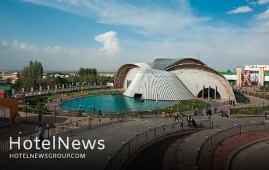
The tourism industry of the west-central province of Hamedan has taken some 2.48 trillion rials ($59 million at the official exchange rate of 42,000 rials per dollar) hit from the coronavirus outbreak over the past couple of months. As the Persian New Year (Noruz) holidays is the golden time for the tourism sector, if the restrictions and lockdown continue to the next Iranian year 1400 (starting March 20), irreparable damage will be done to this sector, the provincial tourism chief Ali Malmir said on Saturday. Accommodation centers, hotels, restaurants, and halls have suffered major damages during the time as well, the official added. Back in December, the official announced that the Iranian government has paid 70 billion rials (about $1.7 million) in loans to the tourism businesses affected by the coronavirus pandemic in the province. He also noted that there are 180 hotels, apartment hotels, eco-lodge units, and travel agencies across the province, which generate jobs for a total of 2,000 people. In late October, deputy tourism chief Vali Teymouri said that a new support package to pay loans to businesses affected by the coronavirus pandemic was approved by Iran’s National Headquarters for Coronavirus Control. He also announced that depending on the type and activity of the businesses, they could benefit from at least 160 million rials (some $3,800) to nine billion rials (some $214,000) of bank loans with a 12-percent interest rate. The loans would be allocated to tourist guides, travel agencies, tourism transport companies, tourism educational institutions, eco-lodges and traditional accommodations, hotels, apartment hotels, motels, and guesthouses as well as traditional accommodation centers, tourism complexes, and recreational centers, the official explained. In September, Teymouri said that around 1.3 million tourism workers in the country were facing problems due to the coronavirus crisis. In October, Cultural Heritage, Tourism, and Handicrafts Minister Ali-Asghar Mounesan warned that Iran’s cultural heritage and tourism will be in a critical situation if the crises caused by the outbreak of the coronavirus continue. In August, Mounesan said that Iran’s tourism has suffered a loss of 12 trillion rials (some $2.85 billion) since the outbreak of the coronavirus pandemic. The government has allocated a 750-trillion-rial (about $18 billion) package to help low-income households and small- and medium-sized enterprises suffered from coronavirus concerns. Optimistic forecasts, however, expect Iran to achieve a tourism boom after coronavirus is contained, believing its impact would be temporary and short-lived for a country that ranked the third fastest-growing tourism destination in 2019. The latest available data show eight million tourists visited the Islamic Republic during the first ten months of the past Iranian calendar year (started March 21, 2019).
Create: Jan 25, 2021 Edit: Jan 25, 2021 Regional News
